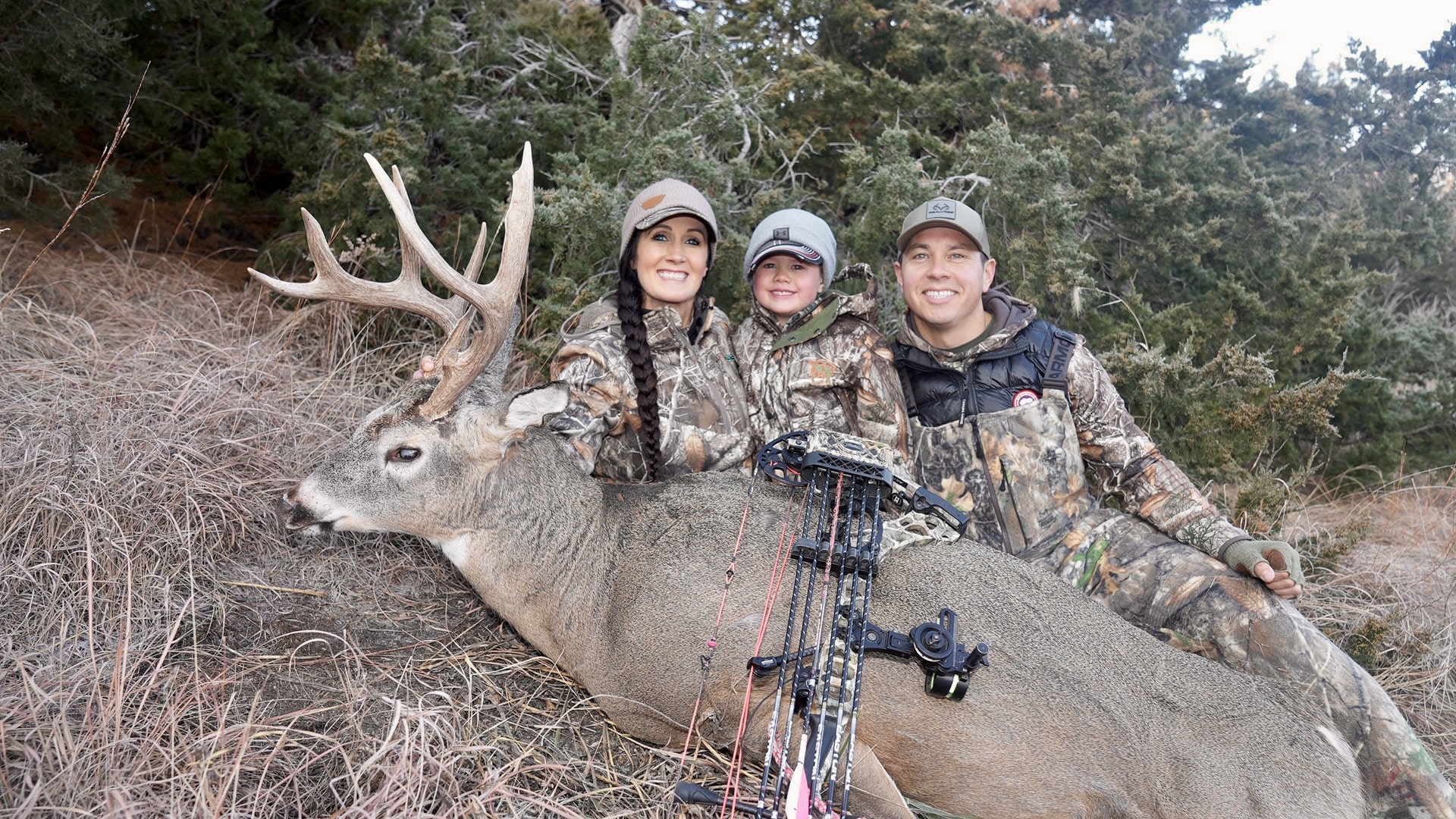You might not think it, but late December and January can be the most productive portion of the season for arrowing a big buck. Melissa Bachman, host of Winchester Deadly Passion (currently in season 12), enjoys late-season hunting and usually finds success in December and January. She saves some tags and hunting spots specifically for the late season, and she also loves returning to other locations for a redemption hunt if she has an unfilled tag.
Hunting tactics for the late season are different than they were in the early and midseason. Bachman shared her tips for making the most of this chilly but promising time of year.

Bachman takes a photo with her family and her harvest after a recent hunt on Dec. 8. Photo Credit: Melissa Bachman
“Year after year, I hunt from September through the end of January, and time and time again, my highest percentage hunts are in the late season, December and January,” Bachman said. “All it takes is a little success to be hooked, and then you’ll wonder why you ever quit early!”
In fact, Bachman already shot two big bucks this December. “It’s proof that late season is great once again and it’s still early,” she said.
Bachman has 26 years of bowhunting experience and spends every possible day hunting the late season, sometimes four or five days per week, because it offers unique opportunities that can help dedicated hunters be successful. There’s less hunting pressure for one, because most people either have filled their tag, don’t want to sit in the cold or just have given up. Meanwhile, bucks are run down from the rut and focused on food, making them easier to pattern and intercept.
Don’t let the temperature scare you away from the blind or stand. Photo Credit: Melissa Bachman
“It’s really a game of mental toughness at this point, and although it can be difficult to leave your warm home and go out in the freezing cold, it really does pay dividends,” Bachman said. “Especially if you can determine where they’re feeding and their routes to and from the food. Then you have an excellent chance at filling your tag.”
Bachman keeps a close eye on the forecast and heads afield before and after big storms. She plans her hunting trips around cold weather and typically skips morning hunts late in the season to focus on evening sits.
Unfortunately, the easiest way to learn whether your gear is sufficient is through trial and error. Bachman said it took years to nail down the correct gear and learn how to be comfortable in the cold, wind and snow. After a hunt with cold feet, hands or whatever else, she suggests immediately coming up with a solution for next time so you can sit more comfortably and for longer.
Bowhunters should always practice throughout the season to ensure accurate shots, but practicing in cold weather while wearing your heavy gear is important. It’s challenging to draw a bow when you’re cold, and bulky clothing can interfere with your shot. Practice outside in your hunting clothes to troubleshoot any issues you might have.
Bachman said trail cameras are a good way to scout late in the season. Use them to help inventory which bucks survived the season (so far) and to see if any new bucks moved into the area. Bachman likes using trail cameras to help determine what’s available so she can decide what to shoot or pass.
Persistence usually pays off, but there are no guarantees in bowhunting. Unfilled tags are part of hunting, but they are easier to cope with when you try your best to fill them. Bachman said to “learn to control the things in your control and let go of the things you can do nothing about.” In other words, if you go hunting in warm weather and the deer aren’t moving, oh well. But if the temperature drops and you have time to hunt but choose not to go, that’s on you.
Each time you contemplate sitting out, remember that deer move every day, that anything can happen, and when the season does eventually end, you’ll have to wait multiple months to go out again. Those three things might motivate you to endure.